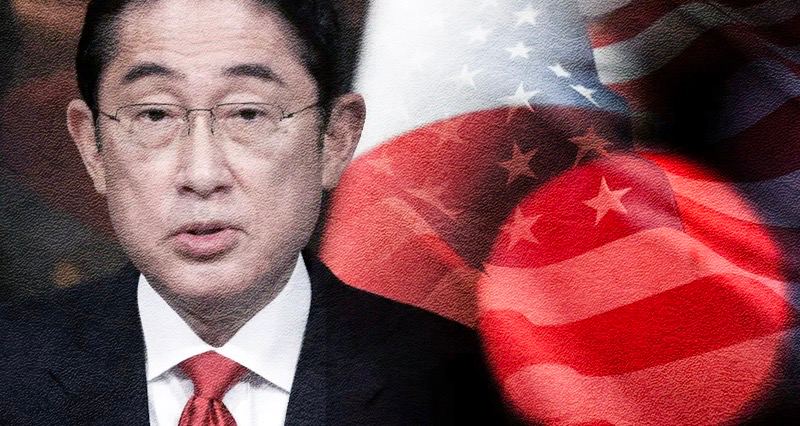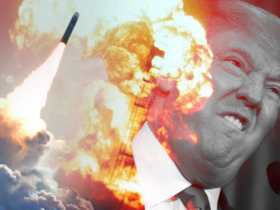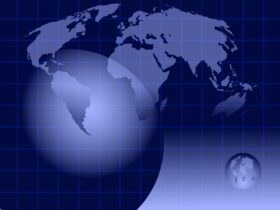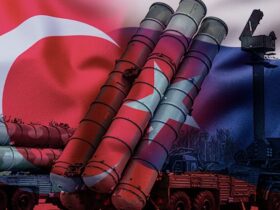Reinforcing encirclement of China and declaration of “Japan as a military imperialist country”.
Reinforcing encirclement of China and declaration of “Japan as a military imperialist country”.
By Takai Hiroyuki
What is the “postwar international order”?
During his visit to the U.S. in April, Prime Minister Kishida Fumio made the following remarks in a speech to the U.S. Congress.
“The U.S. shaped the international order in the postwar world through economic, diplomatic, military, and technological power…The international order that the U.S. worked for generations to build is facing new challenges.”
What kind of order is the “international order” referred to here? In fact, the terms “imperialism” and “powers”, which were commonly used in books and textbooks to describe the world before the end of World War II, are rarely used when describing the world after the war.
Then, did the imperialist countries suddenly cease to be imperialist countries, and did the world’s domination-subjugation structure disappear? Not quite. From the postwar period to the 1960s, the independence of the colonized countries continued, but most of them were only formally independent, and they continued to be dominated economically, politically, and militarily by the Western powers. However, the imperialist powers came to be called “advanced countries,” while the former colonies were called “underdeveloped or developing countries,” and the disparity problems caused by the domination-abduction relationship between them were called the “North-South problems.” The “postwar international order” shaped by the U.S., as Kishida calls it, is such an “order of world domination by the West and imperialist countries.”
The future of the imperialist “international order”
What, then, does it mean by the situation in which the “international order” is “facing new challenges?” Kishida says the following:
“The balance of economic power is shifting. The Global South plays a greater role in responding to challenges and opportunities and calls for a larger voice… China’s current external stance and military actions present an unprecedented and the greatest strategic challenge, not only to the peace and security of Japan but to the peace and stability of the international community at large.”
In other words, the countries that the U.S., Japan, and others see as “challenging” the predominant international order are China and the countries of the “Global South” that were once invaded and colonized by the West and Japan.
Now amid a major turning point in world history
By the way, Kishida refers to the current situation as “history’s turning point” and says, “we are now at an inflection point that will define the next stage of human history.”
Indeed, the world is now at a major turning point in “500 years of modern history – the structure of world domination.” These “500 years” have been in the “world domination and dominated structure,” which has been gradually created by the invasion and domination of the outside world by the West.
In particular, from the mid-1800s to the 1900s, countries such as Britain, France, Germany, the U.S., and Japan invaded and colonized various parts of the world and were called the imperialist powers. At the center of these powers was the British Empire as the world’s dominant power. The structure of world domination by these imperialist powers remained basically unchanged after World War II, with the U.S. replacing Britain as the dominant power.
The rise of the “aggressed/colonized countries”
Today, however, this structure is undergoing a fundamental shift. The imperialist countries that dominated the world economy also after World War II – the “advanced countries” – have lost much of their economic status and are being overtaken by former “underdeveloped” countries such as China and India.
These nations that achieved economic rise, including Indonesia, Brazil, and Mexico, are gaining more political and diplomatic influence in the “international community.” The imperialist countries that have an “order” to the world according to their own interests and desires are now confronted with a large presence of countries that have been invaded and colonized by these imperialist countries. It should be noted that, unlike the U.S., Europe, and Japan, these countries have achieved their economic rise without military invasion or domination of other countries.
Declaration of “Japan as an imperialist country”
At the present time of the great historical transition described above, when, as Kishida puts it, “the international order built by the United States is facing a new challenge,” he speaks of and declares what Japan is going to do as follows.
“Japan is… on deck, we are on task. And we are ready to do what is necessary… Japan is already standing shoulder to shoulder with the United States… Japan has changed over the years… Japan has transformed its national security strategy… We first became a regional partner of the United States, and now we have become your global partner…”
Since the end of the war, Japan has been “contributing” to the “international order” maintained by the military power of the U.S., by taking economic revenues from the world and using its economic power to help maintain that “order”. And now that the “order” for Europe, the U.S. and Japan is being “challenged” by the countries of the Global South, led by China (or so they think), Japan is “engaged” in the “mission” of maintaining that “order” together with the U.S., by also using its military power. In other words, Kishida’s speech was a declaration of “Japan as an imperialist nation” that “Japan has turned into a genuine imperialist nation with the use of powerful military force.”
Building a “network to encircle China and war posture against China”
The “network to encircle China and war posture against China” (strategy to weaken China) that Japan, the U.S., and others are now steadily advancing is driven by their desire and objective to rebuild the “international order” in which they have the superior hand and to continue to dominate the world. The following statements in the Japan-U.S. Joint Statement also relate to the building of military power to realize this “desire and objective.”
“We welcome the progress in optimizing Alliance force posture in areas including the Southwestern Islands to strengthen U.S.-Japan deterrence and response capabilities, and we confirm the importance of further advancing this initiative.”
By “the progress in optimizing Alliance force posture in areas including the Southwestern Islands,” it means that Japan and the U.S. are making good progress in building a war and military posture against China in proximity to China. And that “building” will be “further promoted.” This is a clear indication of the belligerence of the imperialist powers.
And the fact that the Japan-U.S.-Philippines summit involving the Philippines was held in conjunction with Kishida’s visit to the U.S., and that joint military drills by the three countries were called for, as at the Japan-U.S.-Korea summit last summer, was also an attempt to strengthen and expand the “encirclement net” around China.
Building a war posture that extends from Okinawa to Kyushu, Chugoku, and Shikoku
For several years now, attack missile bases have been built one after another on the islands of the Ryukyu Arc, and troops and ammunition have been deployed. At the same time, moves are underway toward the military use of civilian airports and harbors and their conversion into military bases, and preparations are steadily underway to build a war posture against China – “turning Okinawa into a battlefield.” The construction of a “war rearguard posture” for deployment to Okinawa in the event of war is now proceeding at a rapid pace in western Japan.
Citizens in each region must work together and in solidarity to stop the war!
As is clear from the map, the establishment of a military blockade and war against China would not be possible without Japan’s cooperation and participation. The U.S. government and military do not see the prospect of victory over China with only an expeditionary force from far away. Therefore, if Japan is removed from this “posture,” the U.S. cannot – will not – go to war with China.
We must urgently create a framework of cooperation and solidarity among all regions of the country and all individuals, and, in conjunction with the forward-looking movement in Okinawa, join forces to fight together, frustrate the government’s building the war posture, and force Japan to break away from its encirclement of China. In this way, we can stop the war in East Asia.
First published on Shiso-Undo News, No. 171, July 2024

















Leave a Reply